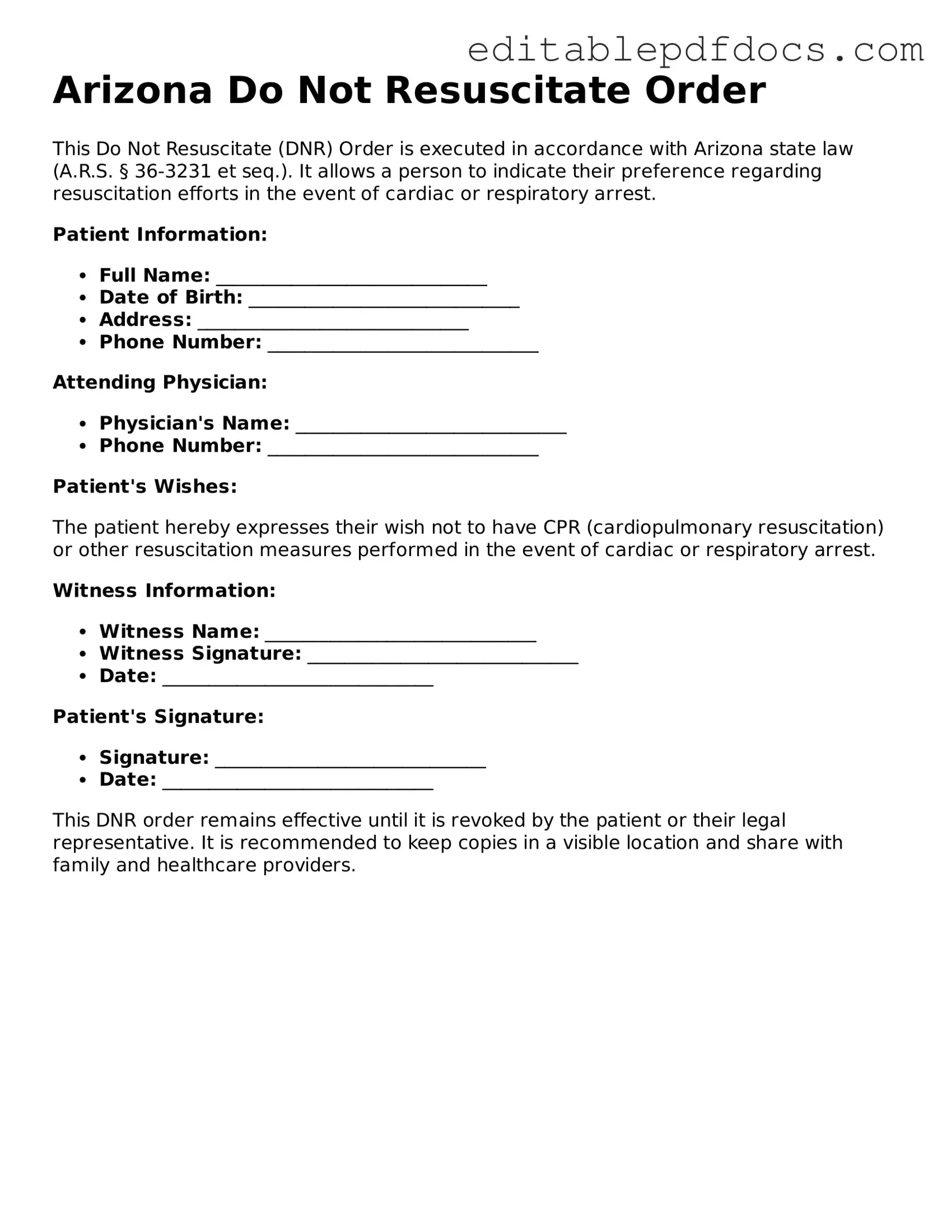Filling out the Arizona Do Not Resuscitate (DNR) Order form can be a critical step in ensuring that a person's end-of-life wishes are respected. However, many individuals make mistakes that can lead to confusion or even unwanted medical interventions. Understanding these common pitfalls can help ensure that the form is completed correctly.
One frequent mistake is not providing clear identification. The DNR form requires the signature of the patient or their legal representative, along with the date. Failing to include this information can render the document invalid. It's essential to double-check that all necessary signatures are present and that the dates are accurate.
Another common error is incomplete information. The DNR form typically asks for specific details, such as the patient's name, date of birth, and medical conditions. Leaving out any of this information can lead to misunderstandings about the patient's wishes. Make sure to fill in every section completely to avoid complications.
People often overlook the importance of having a witness. In Arizona, the DNR form must be signed in the presence of a witness who is not related to the patient. Failing to have an appropriate witness can invalidate the document. It’s advisable to choose someone who understands the implications of the DNR order and can provide an unbiased perspective.
Another mistake is not discussing the DNR order with family members. While the form is a personal decision, informing family members about the patient's wishes can prevent confusion during a medical emergency. Open communication can foster understanding and support for the decisions made, ensuring that everyone is on the same page.
Finally, people sometimes forget to review and update the DNR order as circumstances change. Health conditions can evolve, and a DNR order should reflect the current wishes of the patient. Regularly reviewing the document ensures that it remains relevant and accurate, providing peace of mind for both the patient and their loved ones.
